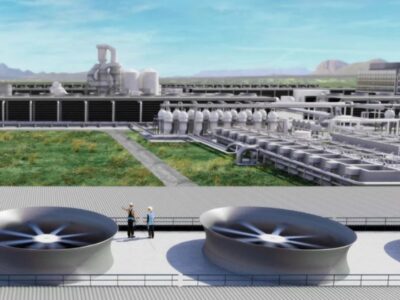Zurich Insurance Group just set a mighty high bar for financial companies that want to lower their carbon footprints. On March 31, the Swiss insurance giant announced plans to accelerate its commitment to reach net-zero emissions in its operations by 2030 – a full 20 years ahead of its original target.
The announcement came on the heels of a string of measures initiated by Zurich over the past year to cut its absolute emissions this decade significantly. Beginning next decade, any emissions that can’t be avoided will be removed from the atmosphere, the company said.
The new plan is a bold one for Zurich, one of the world’s leading multi-line insurers with about 56,000 employees, operations in more than 210 countries, and $60 billion in annual revenue.
In March 2021, the company unveiled plans to cut operational emissions by 50% by 2025 and 70% by 2029. It also set goals to reduce the carbon intensity of its listed equity and bond investments by one-quarter by 2025 and 30% for direct real estate investments. Its initial aim was to achieve net-zero in its investment portfolio by 2050.
By moving the net-zero date up to 2030, Zurich set an ambitious standard that will largely involve nature-based solutions, which can have the most significant impact on the development of the carbon removal industry.
The company has signed carbon removal agreements with several suppliers of nature-based solutions. It has also made advance payments to help the suppliers develop, scale, and commercialize their technologies.
The projects were chosen to align with Zurich’s broader sustainability goals, including flood resilience, wildfire prevention, and social equality. Zurich started measuring its carbon footprint in 2007.
Since then, the company claims to have avoided an estimated 1 million metric tons of CO2-equivalent emissions.
“Our focus remains on reducing them to a minimum,” Alison Martin, Zurich’s CEO of EMEA and Bank Distribution, said in a statement. “To balance out our unavoidable residual emissions, we are supporting innovative carbon removal solutions. The urgency of the situation means we need to be proactive and help scale up the carbon removal industry, which is still in its infancy.”
The carbon removal suppliers Zurich signed deals with are Australia-based InterEarth, Puerto Rico-based Bio-Restorative Ideas, and U.S.-based Oregon Biochar Solutions. Zurich’s participation was facilitated through Puro.earth, a carbon removal marketplace.
The InterEarth project uses a process called woody biomass burial to remove carbon dioxide. It involves growing highly adapted woody plants on previously cleared Australian farmland in regions of low rainfall. The plants are periodically trimmed of their above-ground biomass. The harvested biomass is then buried and encapsulated in dedicated subterranean chambers. The goal is to store the carbon captured within the biomass permanently.
The Bio-Restorative Ideas project will convert waste and invasive bamboo into high-quality biochar on the site of a former sugar cane factory in southwest Puerto Rico. The biochar will be used to improve soils for better food production and yields. Among the other potential applications is using biochar as an additive to concrete or building materials.Oregon Biochar Solutions also produces biochar, primarily sourced from forest waste. Most of its material is sold to farms, and the company has enough capacity to produce more than 3,000 metric tons of biochar a year. Revenue from the sale of carbon removal certificates will be used to reduce prices.





